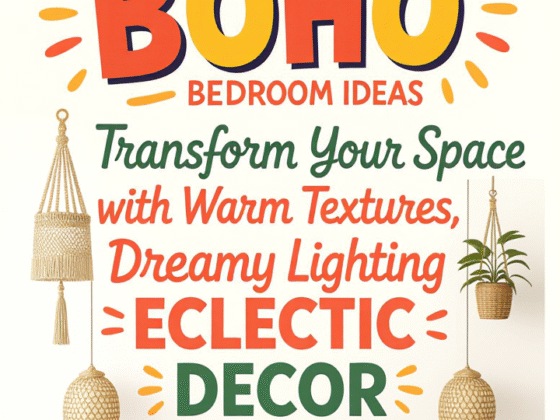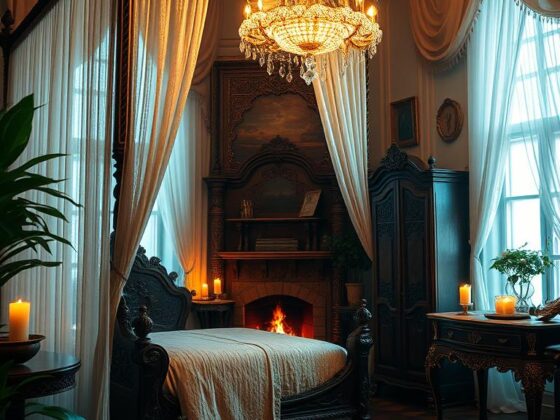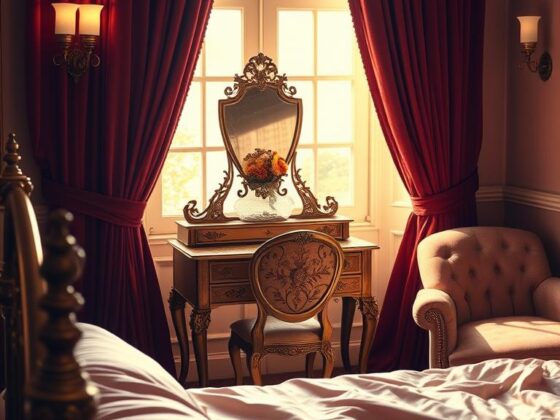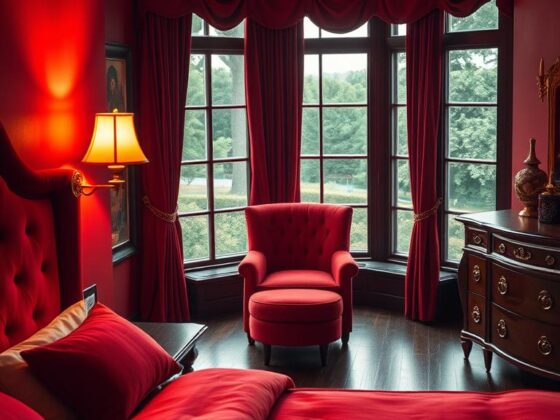What if your bedroom could feel like a seaside retreat no matter where you live? I’ve spent years helping homeowners transform ordinary spaces into calming escapes, and I’m thrilled to share how coastal design principles work anywhere – even miles from the ocean. Incorporating light, airy fabrics, natural textures, and a palette inspired by the beach can create an inviting atmosphere reminiscent of ocean breezes. Consider blending these elements with bohemian bedroom décor ideas to add a touch of personal flair and warmth. With the right combination, your sanctuary can evoke the serenity of coastal living, regardless of your location.
Creating a coastal-inspired sanctuary isn’t about shell collections or literal nautical themes. It’s about capturing that effortless balance between relaxation and refinement. Picture soft, sun-bleached hues blending with natural textures – like linen curtains swaying in an imagined breeze.
Through this guide, you’ll discover how to blend practical design choices with vacation-worthy vibes. We’ll explore color schemes that mimic morning fog over water, furniture shapes that echo driftwood curves, and lighting that glows like sunset reflections. You’ll learn why designers often pair crisp white bedding with weathered wood accents for that “just-right” lived-in elegance.
Key Takeaways
- Coastal decor thrives on layered neutrals and organic materials
- Successful designs balance airy minimalism with tactile textures
- Lighting plays a crucial role in creating relaxed atmospheres
- Versatile principles adapt to master suites or compact guest rooms
- Professional techniques achieve high-end looks with DIY accessibility
Whether you’re refreshing a primary suite or designing a guest room, these strategies will help you craft spaces that feel both curated and casually inviting. Let’s create your personal oasis where every morning feels like a gentle tide rolling in.
Introduction to Beach Style Bedrooms
Coastal-inspired sleep spaces offer more than decor—they create a lifestyle. Through my design consultations, I’ve seen how these rooms become sanctuaries that promote relaxation through natural materials and soothing palettes. The magic happens when practicality meets vacation vibes, whether you’re in a city high-rise or lakeside cottage.
- Light-reflecting color schemes that mimic sand and surf
- Breathable textiles like linen and cotton
- Organic shapes that mirror nature’s imperfections
Urban dwellers often surprise themselves by how well coastal elements brighten compact rooms. I recently helped a client in Chicago visually double their small sleeping area using these techniques. The secret? Strategic layering of textures instead of bulky furniture.
| Space Type | Key Materials | Color Palette |
|---|---|---|
| Urban Apartments | Jute rugs, sheer curtains | Soft greys + creamy whites |
| Suburban Homes | Reclaimed wood, sea grass | Aqua accents + warm neutrals |
| Waterfront Properties | Weather-resistant wicker | Deep navy + sun-bleached tones |
This design philosophy draws from global influences while keeping comfort central. Whether you prefer Hamptons crispness or Mediterranean warmth, the core remains the same: spaces that feel both curated and casually inviting. Ready to transform your personal oasis? Let’s explore how these principles adapt to your unique space.
Understanding Coastal Chic Decor
Many clients ask me: “How do we achieve that lived-in luxury feeling?” True coastal chic isn’t about themed decor – it’s a mindset. Through redesigning over 50 spaces, I’ve discovered it’s the artful imperfections that create authentic seaside energy.
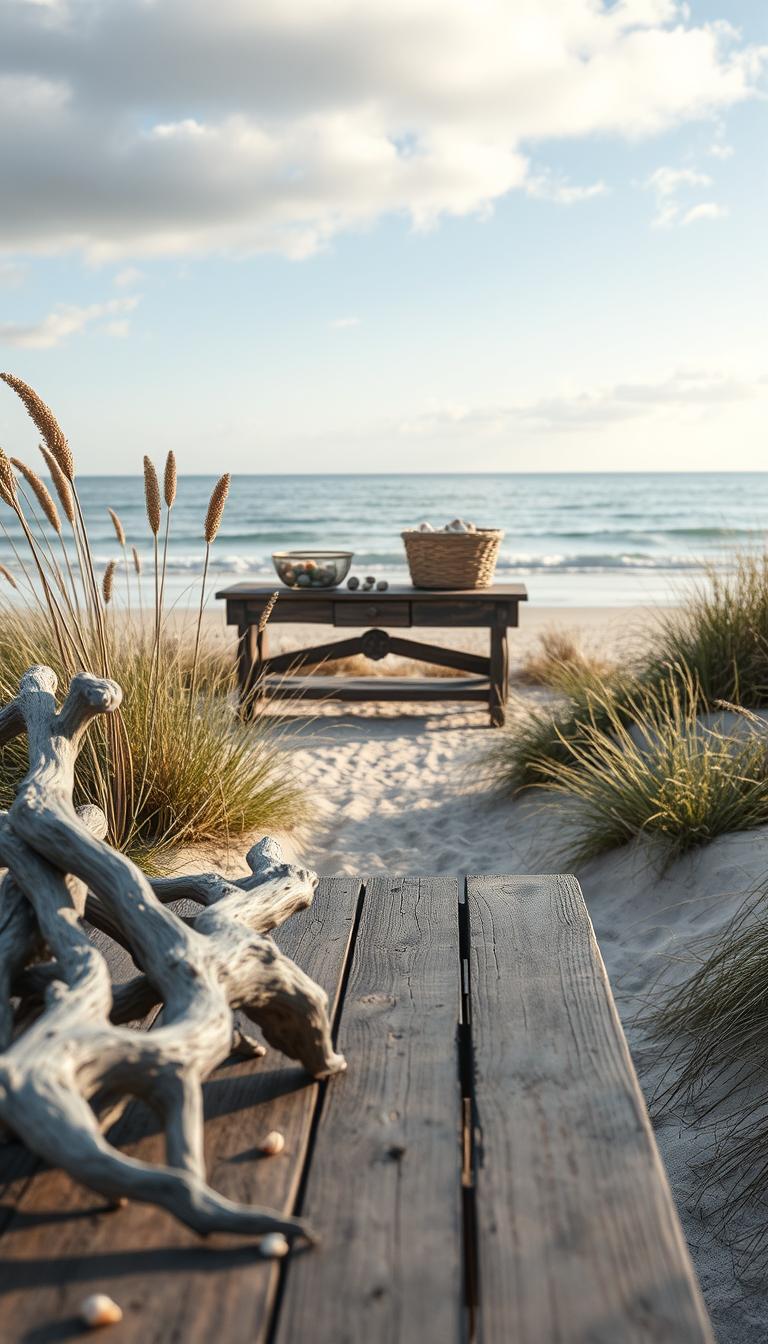
Natural light becomes your best ally here. Large windows dressed in sheer fabrics amplify sunlight while maintaining privacy. One client transformed their dark city loft by simply swapping heavy drapes for linen curtains – instant airiness without renovations.
| Coastal Chic | Basic Beach Themes |
|---|---|
| Weathered oak nightstands | Anchor-patterned bedding |
| Handwoven sea grass rugs | Plastic starfish decorations |
| Monochrome textured throws | Bright striped shower curtains |
“The magic lies in what you feel when entering the room – salt-kissed air, not saltwater kitsch.”
Focus on elements that engage multiple senses. A vintage cedar chest adds visual texture and releases subtle woody notes. I often layer crisp percale sheets under nubby knit blankets – contrast creates depth while inviting touch.
This curated approach works because it evolves naturally. Start with three foundational pieces: a driftwood-inspired lamp, stonewashed linen duvet, and jute-wrapped vase. Build around these with personal finds over time. Ready to explore how these elements combine? Continue reading for our expert breakdown of essential components.
Essential Elements of a Beach Style Bedroom
The secret to coastal-inspired spaces lies in balancing visual calm with tactile richness. Through designing over 30 sleep retreats, I’ve found success comes from three core components working in harmony.

Color Palette and Lighting
Victoria Hagan’s Palm Beach project taught me a valuable lesson: let your environment guide color choices. Her blue-and-white scheme mirrored the shoreline visible through bedroom doors. I recommend starting with cream foundations before adding watery blues or misty greys.
Natural light transforms rooms better than any paint color. One client amplified their space by trimming tree branches outside windows. For evenings, try dimmable amber bulbs in rattan fixtures – they cast a sunset-like glow.
| Material | Texture Effect | Maintenance Tip |
|---|---|---|
| Weathered Oak | Adds organic character | Wipe with dry cloth |
| Linen Blend | Softens hard surfaces | Steam wrinkles weekly |
| Braided Jute | Grounds floating elements | Vacuum gently |
Textures and Natural Materials
Layering textures creates depth without clutter. My favorite approach combines smooth ceramic lamps with nubby knit throws. A recent project used sea grass wallpaper behind a lacquered dresser – the contrast felt both fresh and timeless.
Choose materials that tell stories. Reclaimed wood nightstands develop patina like sun-bleached driftwood. I often source vintage hemp rugs – their imperfections add authenticity you can’t buy new.
“Great design feels collected, not decorated. Let your space evolve like shifting sands.”
Ready to explore trending approaches? Continue reading for expert-approved coastal styles that adapt to any home.
Trending Coastal Bedroom Styles from Design Experts
Design visionaries are reimagining seaside aesthetics with fresh perspectives. I’ve studied dozens of projects where coastal bedroom ideas transform ordinary rooms into artful retreats. Let’s explore four approaches shaping today’s design landscape.
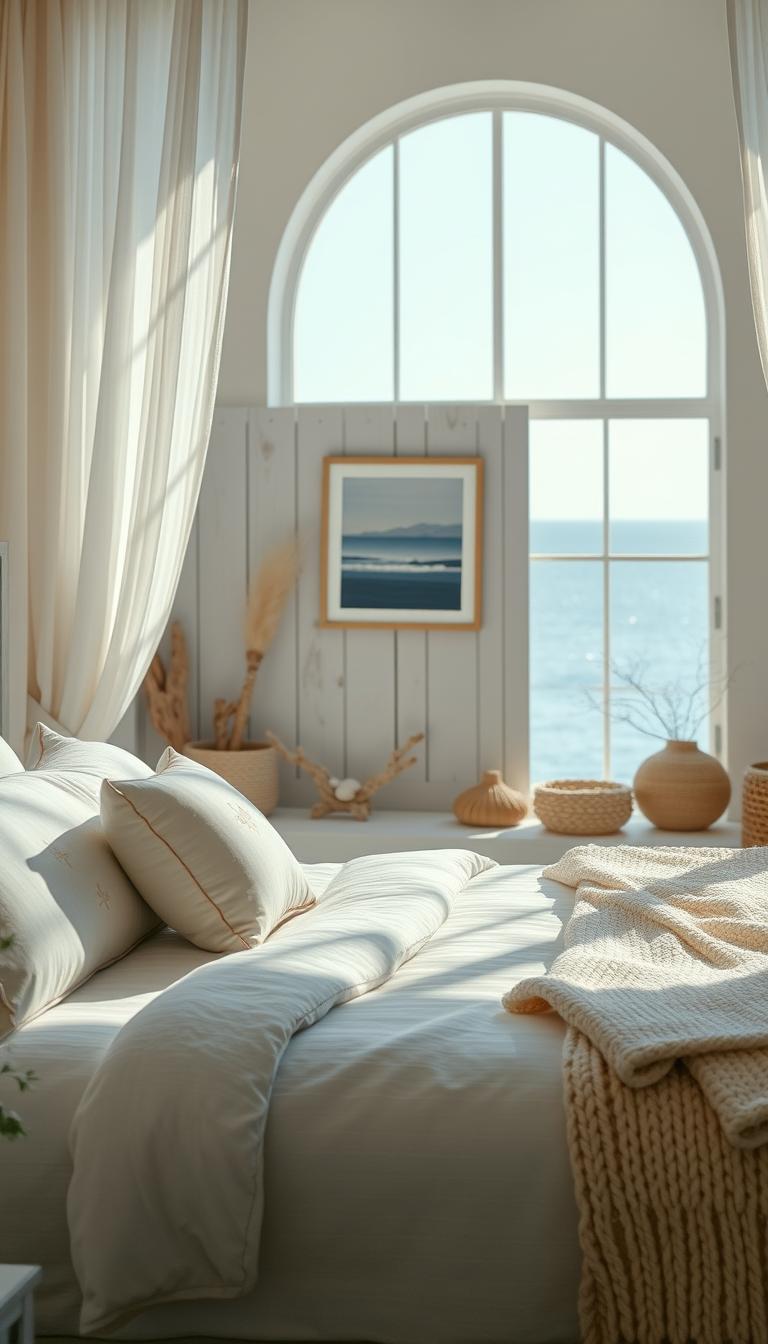
Serene Blue & Lighthouse White
Victoria Hagan’s Palm Beach project for Andrew Frasz proves blue never goes out of fashion. She layered six shades of aqua against crisp white moldings. The effect? A space that feels both vibrant and tranquil.
Chris Everard’s lighthouse-inspired room takes minimalism further. Curved walls mimic nautical architecture, while gray-and-white bedding adds subtle contrast. “White needs texture to avoid sterility,” he notes. Try linen drapery with raw-edge hems.
| Design Approach | Key Feature | Best For |
|---|---|---|
| Global Fusion | Embroidered Dubai textiles | Eclectic collectors |
| Minimal Dunes | Low-profile platform beds | View-focused spaces |
| Modern Classic | Reclaimed wood accents | Traditional homes |
Cultural Narratives & Intentional Simplicity
Architects Marieanne Khoury-Vogt and Erik Vogt crafted a Florida retreat blending Middle Eastern carvings with local shells. Their secret? Letting each piece tell its story without overcrowding.
“Empty space isn’t wasted space – it’s where your eyes rest.” – Jenni Kayne
These examples show coastal design evolving beyond predictable themes. Whether you’re drawn to cultural fusion or clean lines, the goal remains: create sanctuaries that whisper relaxation. Ready to explore color strategies? Continue reading for transformative techniques.
Integrating Color, Patterns, and Textures
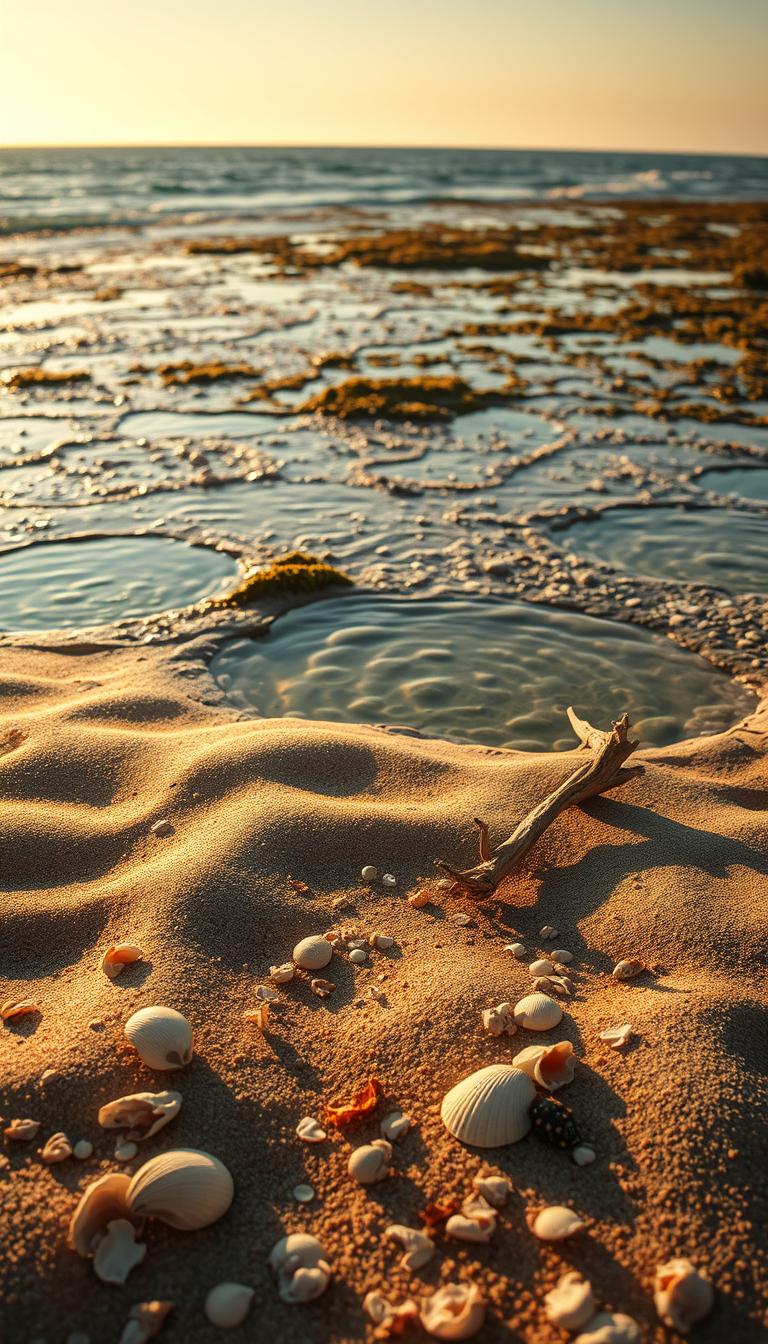
Have you ever wondered how designers mix bold patterns without creating visual chaos? Carlos Mota’s Peruvian retreat taught me pattern mastery isn’t about restraint – it’s strategic storytelling. His primary space features an ornate Indian screen as a headboard, layered with vintage Turkish suzani textiles that whisper “global explorer” rather than “theme park”.
The magic lies in maintaining a cohesive color narrative. Notice how Mota’s blue-green lampshades echo the bedding’s deepest hues? I advise clients to anchor patterns with shared tones while varying scales. Try large organic prints on curtains paired with subtle wave-like textures in rugs.
| Element | Scale | Color Role |
|---|---|---|
| Wallpaper | Large | Base tone |
| Throw pillows | Medium | Contrast |
| Lampshades | Small | Accent |
Sarah Vaile proves even zebra stripes can feel coastal when reimagined in navy and cream. Her secret? Choosing fluid shapes that mimic nature’s curves over rigid geometries. “Patterns should feel discovered, not staged,” she told me during a project consultation.
Texture bridges the gap between bold prints and serene vibes. Try pairing glossy ceramic vases with nubby hemp cushions. I recently used sea-worn driftwood frames around mirror edges – the rough finish softened vibrant oceanic artwork beautifully.
“Start with one hero pattern, then build supporting actors. Let textures handle the subplot.” – Carlos Mota
Ready to transform your space? Continue reading to discover how natural materials enhance these design principles.
Nautical Accents & Natural Materials in Decor
The true essence of coastal design reveals itself through materials that whisper stories of sun and sea. I’ve found spaces feel most authentic when combining time-worn elements with functional artistry. Let’s explore how top designers achieve this balance.

Using Driftwood, Seashells, and Rattan
Jacques Grange’s Portuguese retreat taught me how wood transforms spaces. His pine ceiling stretches like sun-bleached driftwood, while a rattan screen adds breezy texture. These elements work because they celebrate imperfections – knots, cracks, and natural variations.
Tom Scheerer reimagined nautical themes in a Palm Beach guest bedroom through clever material choices. Shiplap walls mimic yacht interiors, while jute rugs ground striped linens. “Rattan’s flexibility makes it ideal for compact spaces,” he noted during our design conference.
| Material | Best Use | Pro Tip |
|---|---|---|
| Driftwood | Statement headboards | Seal with matte varnish |
| Seashells | Lamp base accents | Group in odd numbers |
| Rattan | Light fixtures | Pair with linen shades |
Incorporating Antique-Filled Elements
Ken Fulk’s Cape Cod project shows how antiques elevate coastal spaces. The Marjorie Merriweather Post bed anchors the room with history, while rope doorstops add playful function. I often source 1920s ship lanterns – their patina can’t be replicated.
“Antiques should converse with modern elements, not overpower them. Let each piece breathe.” – Ken Fulk
When blending eras, maintain a common texture thread. Worn wood nightstands complement vintage-inspired fabrics beautifully. For your own space, start with one conversation piece – perhaps a salvaged porthole mirror – then build around its character.
Continue reading to discover how lighting completes these material stories.
Layering Textiles & Lighting for Ambience
Have you ever noticed how the best vacation rentals wrap you in comfort? The answer often lies in strategic textile combinations paired with thoughtful lighting. Jean-Louis Deniot’s island retreat masterclass shows this balance – his fishing net-inspired canopy dances above a bed dressed in oceanic blues, while playful pompom trim adds tactile joy.
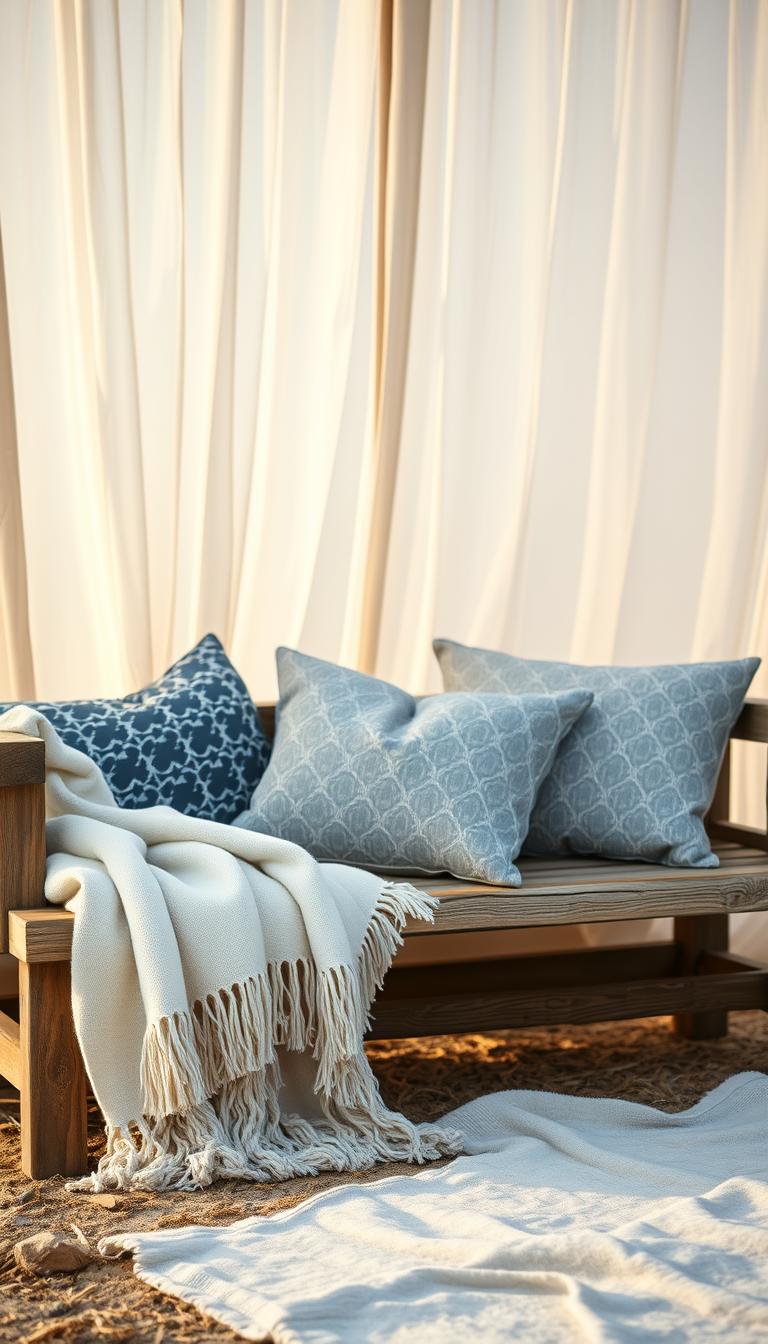
Kelly Hurliman proves you don’t need blue hues to evoke seaside serenity. Her all-white sanctuary uses varying fabric weights – crisp linen lampshades contrast with nubby wool throws. “White becomes dynamic through texture,” she shared during our studio visit. This approach works beautifully in smaller spaces where color might overwhelm.
Canopy Bed Magic
Nothing anchors a coastal retreat like a well-dressed bed. Janie Molster’s custom yellow-and-white canopy demonstrates how fabric choices elevate simple frames. For DIY enthusiasts, I recommend starting with neutral bedding and building layers:
- Organic cotton sheets as your base
- Textured throw blanket folded at the foot
- Patterned lumbar pillows for visual pop
The secret lies in mixing material stories. Try pairing Deniot’s woven elements with Hurliman’s matte finishes. Dimmable amber bulbs in rattan fixtures cast a sunset glow that makes every layer sing. For more coastal lighting strategies, explore our detailed guide.
“Treat your bed like a layered shoreline – each textile should reveal itself like tidal patterns.” – Jean-Louis Deniot
As evening falls, the right lighting transforms these layers into a luminous nest. I often use paper lanterns above canopy frames to create soft overhead glow. Remember: your lighting should whisper, not shout – just enough to highlight those carefully curated textures.
Furniture and Bed Frame Selections for Coastal Comfort
Your bed frame isn’t just furniture—it’s the anchor of your personal retreat. Through designing coastal spaces, I’ve learned how the right foundation balances visual impact with everyday comfort. Angie Hranowsky proved this in her Sullivan’s Island project, where a custom tropical frame brought playful energy through curved rattan details.
Rinfret Ltd.’s hand-painted canopy creation shows how artistry elevates function. Local artist Robin Grubman transformed simple seashell motifs into a headboard that feels both organic and luxurious. It’s proof that coastal spaces thrive on thoughtful customization rather than generic pieces.
Caroline Rafferty’s Palm Beach home demonstrates vintage power. Her Karl Springer bed grounds vibrant patterns with its clean lines, showing how heritage furniture creates stability in lively rooms. I often recommend starting with such a statement piece, then building layers around it.
Natural materials remain key for effortless warmth. Weathered wood frames pair beautifully with linen upholstery, while wicker accents add breezy texture. Remember: your bed should invite touch as much as admiration—opt for fabrics that soften sharp angles.
Ready to explore lighting that complements these choices? Continue reading for strategies that make every design element shine.



